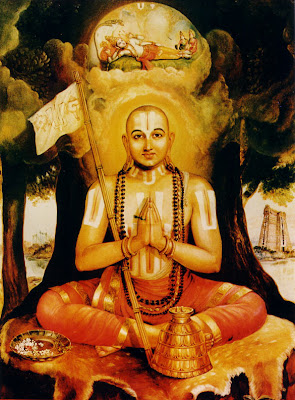
The Vedas ( Rig , Saman , Yajur , and Atharva ) form the bedrock of the scripture of the Sanathana Dharma and form the primary authority .Each Veda as mentioned earlier , has four parts - (Mantra Samhitas , Brahmanas , Aranyakas and Upanishads ). The Upanishads ,dealing with the philosophy of God , form the last part of the Veda . They are 108 in number , of which 12 are considered important . Isha , kena katha , prashna , mundaka , mandukya , aitereya , taitiriya ,chandogya , brhadaranyaka, kausitaki, and svetasvatara.
The next level of Scriptures , the secondary authority , are called the Smriti ( as opposed to the Veda which is called the Sruti ). Smriti means " that which is remembered " . These were composed by the sages , philosophers and law givers . These being of human origin , can be adapted to suit the times .
The smritis consist of the Sutras and the Sastras.
The sutras are manuals dealing with rituals , customs , law , philosophy etc .
Examples of Sutras are
Brahma Sutras dealing with Vedanta philosophy, ( by sage Badarayana )
Dharma Sutras dealing with orthodox law ,
Grhya Sutras dealing with duties of householders ,by Ashvalayana
Srauta Sutras dealing with vedic ritual and fire sacrifices , byAshvalayana
Sulva Sutras dealing with geometry , and instructions to build the complex vedic altars etc .
Apahstambha Sutras .by sage Apahstambha .
The Six systems of philosophy are also each explained by a Sutra composition by the founder of each .(like Patanjali's Yoga Sutras .)
The Sastras are elaborations of the Sutras by commentators etc
For example ,
The Dharma Sastras form the codes of noble living .
The primary law givers were Manu , Yajnavalkya , and Parasara .
Next come the Itihasas or "histories " consisting of the two great epics the Mahabarata and the Ramayana . The Mahabharata is the worlds biggest epic composed by sage Ved Vyasa , consisting of 100,000 stanzas based on events that took place around 900 BC in north india. Around the main story ( about the rivalry between two branches of a royal family - the Kauravas and the Pandavas , wherein all the kingdoms of india became involved ) is woven numerous sub plots ,linked stories , moral stories , philosophical discussions , and so on . The Ramayana consists of 25000 stanzas , composed by sage Valmiki ,revolves around the adventures of Rama , prince of Ayodhya ( in north India ) who traverses the subcontinent and goes to Lanka ( Sri Lanka ) in search of his kidnapped wife Sita . This is based on events that took place around 1400 BC .The Ramayana , also has associated smaller stories interwoven into it with sub plots and philosophy thrown in .
The Bhagavad Gita , is part of the Mahabharata and is now considered specially sacred .
Together along with the Brahmasutras ( also called the vedanta sutras ) , and the Upanishads , the three are considered the Authoritative Scriptures or Prasthana Traya , that define the essence of the Sanathana Dharma .
Next come the Puranas , which deal with religious stories and legends about the gods , sages , saints , kings and their devotees .They are 18 in number . The epics and the puranas consist of folk religion , which ordinary people can understand , unlike the philosophy of the Vedas . The Bhagavata Purana ( with the story of Krishna ) , the Vishnu Purana , the Siva Purana etc are popular . The Puranas also describe the incarnations of God , wherein God comes down to earth to help Dharma .
Next come the Agamas or ritual texts dealing with the subject of the modes of temple and personal worship of individual deities . These are classified into 3 groups - Vaishnava ( dealing with Vishnu and related gods ), Saiva ( dealing with Siva and related gods ) , Sakta ( dealing with the mother goddess in all her forms ) agamas .
Last come the Darshanas or Philosophical traditions , of which there are six -Nyaya ( by Gautama) , Vaisesika ( by Kanada ), Samkhya (by Kapila ) , Yoga (by Patanjali ) , Mimamsa ( by Jaimini ) , and Vedanta ( by Badarayana) .
Currently , the Vedanta is considered as the most satisfactory .
These then are the scriptures of the Sanathana Dharma . They are all composed in Sanskrit , the perfect language of the Gods , ( which is why we should all learn at least some sanskrit ). The Scriptures of the Sanathana Dharma collectively rival ,in volume ,all other scriptures of other religions put together . They also cover ,umbrella like , every single type and form of religious and spiritual thought , belief , debate and philosophy that ever existed or may exist .























